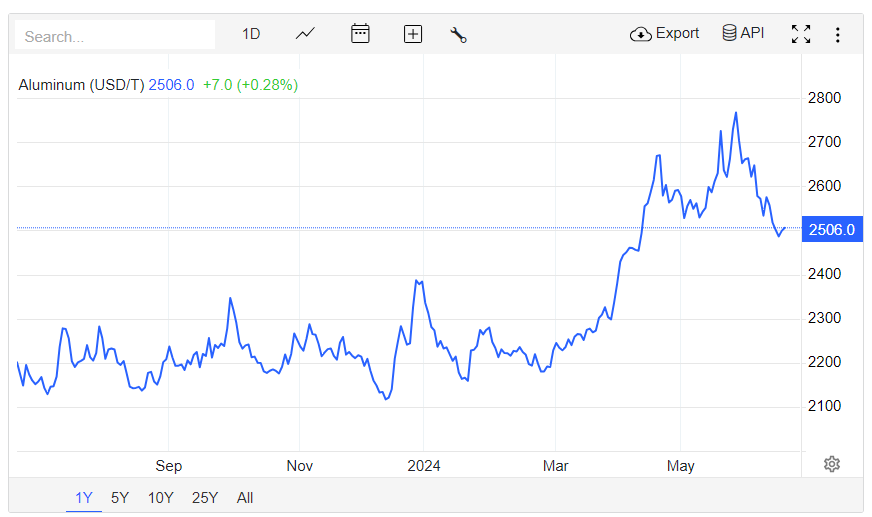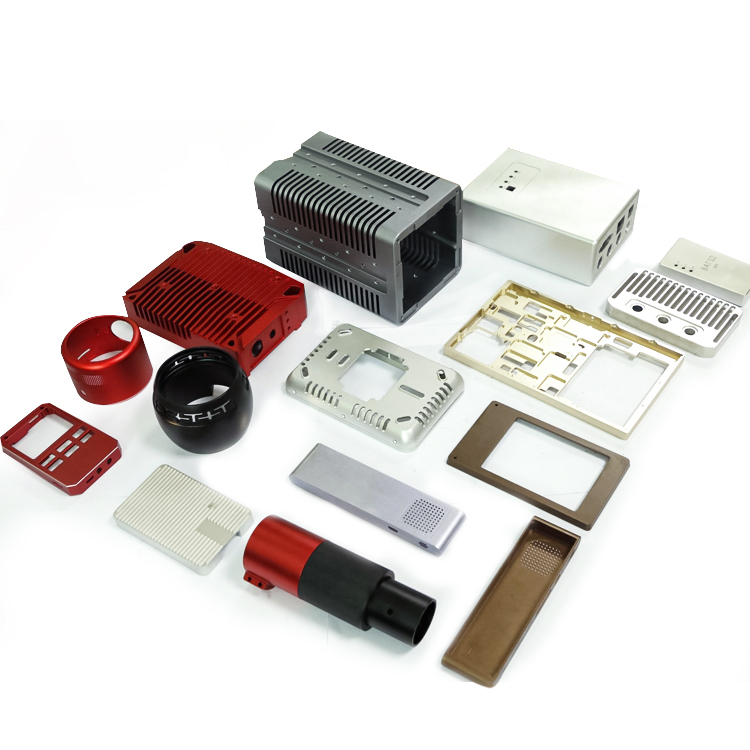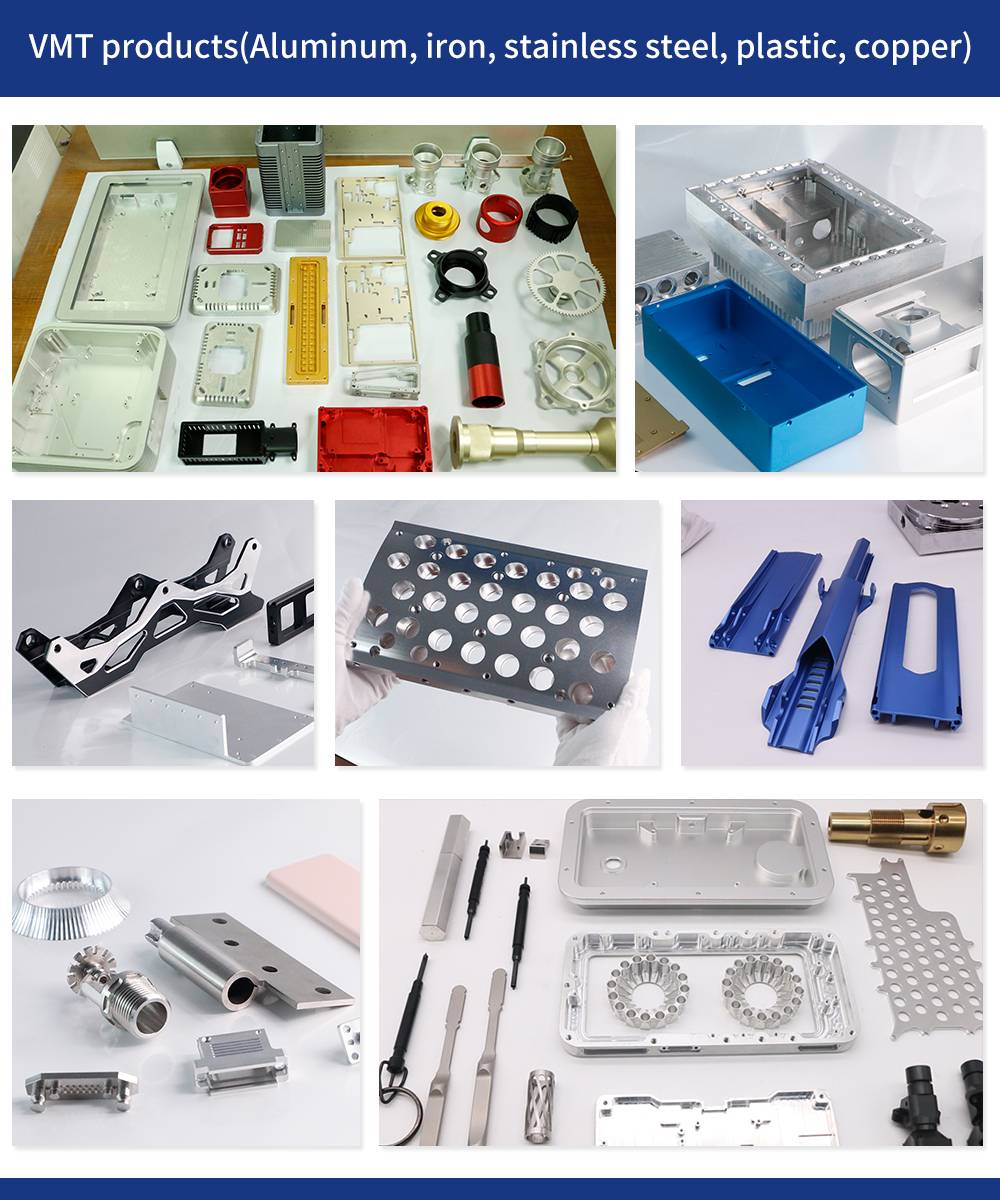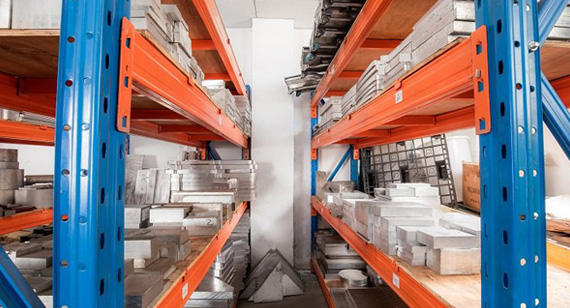15 years one-stop China custom CNC machining parts factory

Hey there I’m VMT Sam!
With 25 years of CNC machining experience we are committed to helping clients overcome 10000 complex part-processing challenges all to contribute to a better life through intelligent manufacturing. Contact us now
 182 |
Published by VMT at Jun 25 2024
182 |
Published by VMT at Jun 25 2024
Overview of Global Aluminum Prices and Market
Introduction
In the context of global economic integration, aluminum, a lightweight, corrosion-resistant, and highly recyclable metal, finds extensive applications ranging from aerospace to everyday household items. Particularly in CNC machining parts manufacturing, aluminum is highly favored for its excellent machinability and mechanical properties. This article will delve into the fundamental characteristics of aluminum metal, the dynamic pricing in various countries, and its application areas, providing readers with a comprehensive and in-depth understanding of the aluminum market.
1. Introduction to Aluminum Metal
Aluminum is a silver-white light metal with an atomic number of 13 and a chemical symbol of Al. It boasts excellent electrical conductivity, thermal conductivity, and ductility, coupled with a low density and high strength, making it one of the most widely used metals in industry. Aluminum is the most abundant metal element in the Earth's crust, second only to oxygen and silicon. Its wide application is primarily due to its unique physical and chemical properties and the continuous development of aluminum machining technology.

2. Aluminum Prices in Various Countries
United States Aluminum Prices
The United States is one of the world's largest producers and consumers of aluminum. Its prices are influenced by the global economic situation, supply-demand relationship, and monetary policies, among other factors. Currently, the price of aluminum in the U.S. is quoted in dollars, approximately X dollars per kg, Y dollars per ton, and Z dollars per pound. These prices fluctuate with changes in market supply and demand.
United Kingdom Aluminum Prices
The aluminum prices in the UK are also influenced by the global market. Due to fluctuations in the pound exchange rate, UK aluminum prices adjust accordingly from the dollar base price. Presently, the aluminum prices in the UK are roughly similar to those in the U.S., but specific prices depend on the local market situation.
Germany Aluminum Prices
Germany, as one of the largest economies in Europe, sees its aluminum prices influenced by the European market. Due to fluctuations in the euro exchange rate and changes in the overall European economic situation, Germany's aluminum prices also vary. Currently, aluminum prices in Germany are similar to those in other European countries, but specific prices depend on the local market conditions.
France Aluminum Prices
France, being a significant producer and consumer of aluminum in Europe, also sees its aluminum prices influenced by the European market. Like Germany, France's aluminum prices are subject to the euro exchange rate and the overall European economic conditions. Presently, aluminum prices in France are similar to those in other European countries, but specific prices depend on the local market conditions.
Italy Aluminum Prices
Italy is another important producer and consumer of aluminum in Europe. Its prices are influenced by the European market. Similar to France and Germany, Italy's aluminum prices are subject to the euro exchange rate and the overall European economic conditions. Presently, aluminum prices in Italy are similar to those in other European countries, but specific prices depend on the local market conditions.
China Aluminum Prices
China is one of the largest producers and consumers of aluminum globally, with prices influenced by both domestic and international factors. In recent years, with China's continuous economic development and industrial restructuring, the Chinese aluminum market has gradually matured, showing a trend of stable growth in prices. Currently, the price of aluminum in China is quoted in yuan, approximately A yuan per kg and B yuan per ton. These prices also fluctuate with changes in market supply and demand.

Which Country Sells the Most Aluminum?
China is undoubtedly the world's largest producer and seller of aluminum. China's aluminum output accounts for a significant portion of global production, and its aluminum exports are also among the highest.
Due to the constant fluctuation of aluminum prices influenced by various factors, it is challenging to provide specific numbers for the price per kg, ton, or pound in different countries. However, generally, aluminum prices in various countries are linked to international market prices and can be converted based on those rates.
3. Applications of Aluminum
Aluminum's applications are extensive, mainly including the following areas:
Aerospace Sector:
Aluminum alloys are widely used in the aerospace industry due to their high strength-to-weight ratio and resistance to wear and tear. They are essential in reducing the weight of aircraft and rockets, thus improving fuel efficiency and increasing payload capacity. Key components such as airframes, wing surfaces, engine parts, and spacecraft are often made from aluminum alloys.
Transportation Industry:
Approximately 22% of aluminum usage is in transportation, including automobiles, motorcycles, bicycles, rail vehicles, containers, and ships. Aluminum alloys are widely used in automobile manufacturing for engine components, body structures, wheels, and frames to reduce weight and improve fuel efficiency. High-speed trains and subways also extensively use aluminum to reduce vehicle weight and increase operating speed.
Electronics and Electrical Industry:
Aluminum's excellent thermal conductivity makes it widely used in the electronics and electrical industry. Industrial aluminum profiles are widely used in electronic devices such as heat sinks, water heaters, and computer stands. Aluminum casings and heat sinks are common components in electronic devices and computer hardware.

Construction Industry:
Construction uses about 32% of aluminum, mainly for doors, windows, curtain walls, decorative panels, and cladding panels. The lightweight, corrosion-resistant, and easy-to-process properties of aluminum make it an ideal choice for modern construction materials. New building forms such as all-aluminum houses and aluminum building templates are being gradually promoted and applied.
Packaging Industry:
Packaging containers use about 11% of aluminum, mainly for packaging food, pharmaceuticals, cigarettes, and more. Aluminum cans, bottle caps, wine seals, and aluminum foil containers are common products in the packaging industry. Aluminum packaging offers excellent preservation performance, moisture resistance, and recyclability.
Power Industry:
About 12% of aluminum usage is in the power industry, including power cables, busbars, and conductors, as well as transmission and distribution equipment. Aluminum's excellent electrical conductivity makes it a crucial material for power transmission and distribution.
Industrial Manufacturing:
Aluminum is widely used in industrial manufacturing for mechanical frames, protective fencing systems, automatic transmission systems, and structural frameworks. Industrial aluminum profiles not only have their own mechanical structure but also meet the load-bearing capacity requirements of industrial manufacturing, with excellent tensile strength and toughness.
Chemical Industry:
Aluminum and aluminum alloys are widely used in chemical equipment such as heat exchange equipment, storage tanks resistant to concentrated nitric acid, and adsorption filters. Cast aluminum alloys, due to their good fluidity and corrosion resistance, are often used to manufacture complex corrosion-resistant components.
Shipbuilding Industry:
Aluminum and aluminum alloys are extensively used in the shipbuilding industry for hulls, support structures, auxiliary equipment, and piping. The lightweight properties of aluminum alloys help reduce the weight of the hull, improving navigation speed and fuel efficiency.
In summary, aluminum plays a crucial role in modern industry and daily life due to its extensive applications and superior performance characteristics.

4. Conclusion
In conclusion, aluminum is a critical metal material that plays an important role in the global economy. As the global economy continues to develop and industrial structures adjust, the aluminum market will present even broader prospects. For the CNC machining parts manufacturing field, aluminum materials will continue to exert their unique advantages, driving the industry's continuous development. Meanwhile, fluctuations in aluminum prices in various countries will also impact the global aluminum market, requiring close attention to market dynamics and policy changes.

5. Frequently Asked Questions
How much aluminum comes from China?
China is one of the largest aluminum producers globally, accounting for a significant proportion of the world's total output. According to relevant data, China's aluminum production accounts for approximately XX% of the global total.
Who is the largest importer of aluminum?
Currently, the United States is the world's largest importer of aluminum. As one of the largest consumers of aluminum globally, the U.S. imports a substantial amount of aluminum, primarily from China, Russia, and other countries.
Which country has more than 25% of the world's aluminum resources?
Australia is one of the countries with the richest aluminum resources globally, with bauxite reserves accounting for more than XX% of the world's total. Additionally, China, Brazil, and India also have abundant aluminum resources.
Ready To Start Your Next Project?
Get Instant Quote

Request a Free Quote
Send us a message if you have any questions or request a quote. We will get back to you ASAP!